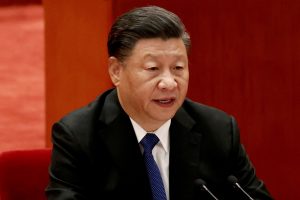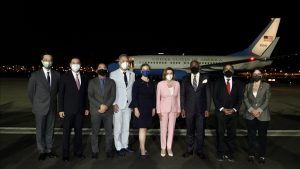
Every year, hundreds of story bearers die. They carry to the grave with them stories that could have changed the ugly face of human existence; stories that often threaten to shake the foundations of the world. They die in mysterious ways. Some are jailed. Some maimed and others kidnapped. Some hanged and others gunned down. Yet others simply disappeared. They are so endangered and hated because of the fire of truth burning in the stories they have risked their lives to scoop. They are in contention with the powers that be; hence, their tragic end. They are our journalists, editors, social media activists, translators, photographers, camera men, drivers, reporters who died in the process of news/information gathering, editing and publication. They are our fathers, mothers, sisters, brothers, nieces, nephews, and cousins. The sad part is, if it were not the case of a famous western media personnel, it is easily shrouded in silence.
The world had no idea that the number of media workforce killed per year grows in geometric progression until International Federation of Journalists published its first report of journalists and media workers killed in 1990. The figure was 40 that year. Between 1990 and 2020, not less than 2,658 journalists and media labour force were reported dead. In Africa, the figure was 467, Europe (373), the Americas (574), Asia-Pacific (683), while it was 561 in the Middle East and Arab world.
That’s the figure available to the IFJ. This figure excludes the ones that were jailed, tortured, killed and the ones that just went missing without any trace or formal report. In regions where the order of the day happened to be corruption/crime in high places, war, foreign invasion etc., it was observed that more journalists and media practitioners met their waterloo. Countries such as Iraq, Mexico, Philippines, Pakistan, India, Russia, Algeria, Syria, Somalia, and Afghanistan were the ten most dangerous countries for journalists. While the major breakdown of law and order in these countries meant that many of the killed journalists were not specifically targeted, it is not a guaranteed fact that a lot of them were not specifically targeted either. Anything is a possibility in times of war. There are many countries that do not appear on this log because there was no “presence” of recognized war violence at the time the deaths were recorded. But that does not mean organized violence against men and women of letters was not taking place in such supposedly “peaceful” regions. State organized crimes are the worst of crimes. Life-taking events are often orchestrated with topnotch Hollywood expertise that makes them look like accidents or mere coincidences or movie scenes.
All you need to do to warrant such a death is wield a story as a weapon against a government, or politician or a cartel or cabal, and you are dead. In many cases, you may not even have the privilege of becoming a part of the known statistics. Over the years, more press freedom organizations rose and presented figures of killed comrades. The figures skyrocketed and confused us more. We know they may not be accurate because reported cases are the ones that are allowed to make it to public domain. Some of the cases forced themselves to public knowledge by a dint of luck, force, or fate. Such were the cases when truth itself rose beyond the bearer and fought its way to recognition. On October 19, 1986, Nigeria’s fearless journalist, Dele Giwa, received a letter bomb. The rest is history. On December 17, 1986, Colombian Journalist, Guillermo Cano Isaza, was killed in front of El Espectador offices in Bogota. His assassination had been inspired by his pen war against Colombia’s drug lords. The list and crazy circumstances of the death of a lot more writers are not exhaustible. The celebration of the memory of both known and unknown pen soldiers is therefore the right step in the right direction.
Recently, UNESCO celebrated World Press Freedom Day by conferring the UNESCO/Guillermo Cano World Press Freedom award on an organization or individual who has had positive impact on press freedom in any part of the globe.
May 3 is World Press Freedom Day. The day was established by the United Nations General Assembly in order to create awareness for the significance of press freedom, and importantly, to remind world governments that they owe their citizens the right to freedom of expression as enshrined in the Universal Declaration of Human Rights (1984) and the 1991 Windhoek Declaration (Free Press Principles written by African Newspaper Journalists in Windhoek).
2022 World Press Freedom Day global conference held between 2nd and 5th of May in Punta Del Este, Uruguay, with the theme: “Journalism Under Digital Siege.” Under this theme, impact of digitalization on information, freedom of expression, privacy and safety of media personnel came under the spotlight. Beyond the theme, the conference presented the opportunity to bring under focus other germane issues affecting people of the fourth realm of the estate in general: the current state of press freedom in global perspective, defending media personnel from attacks, celebrating the principles of freedom etc.




